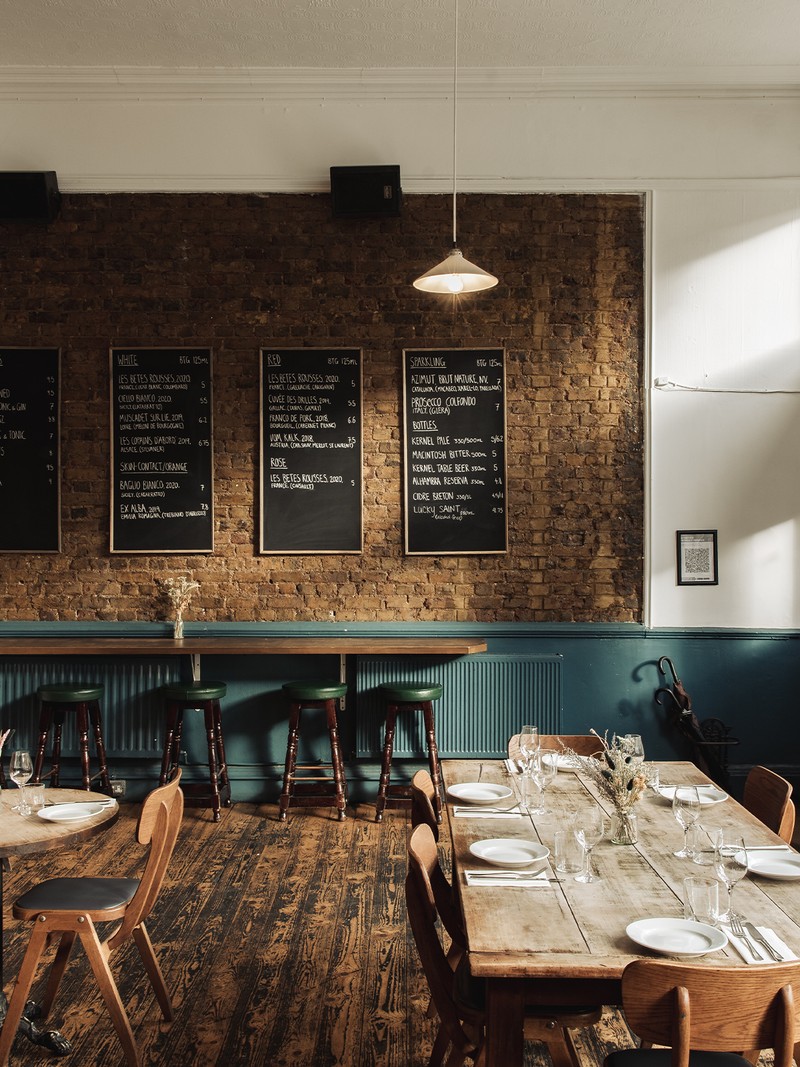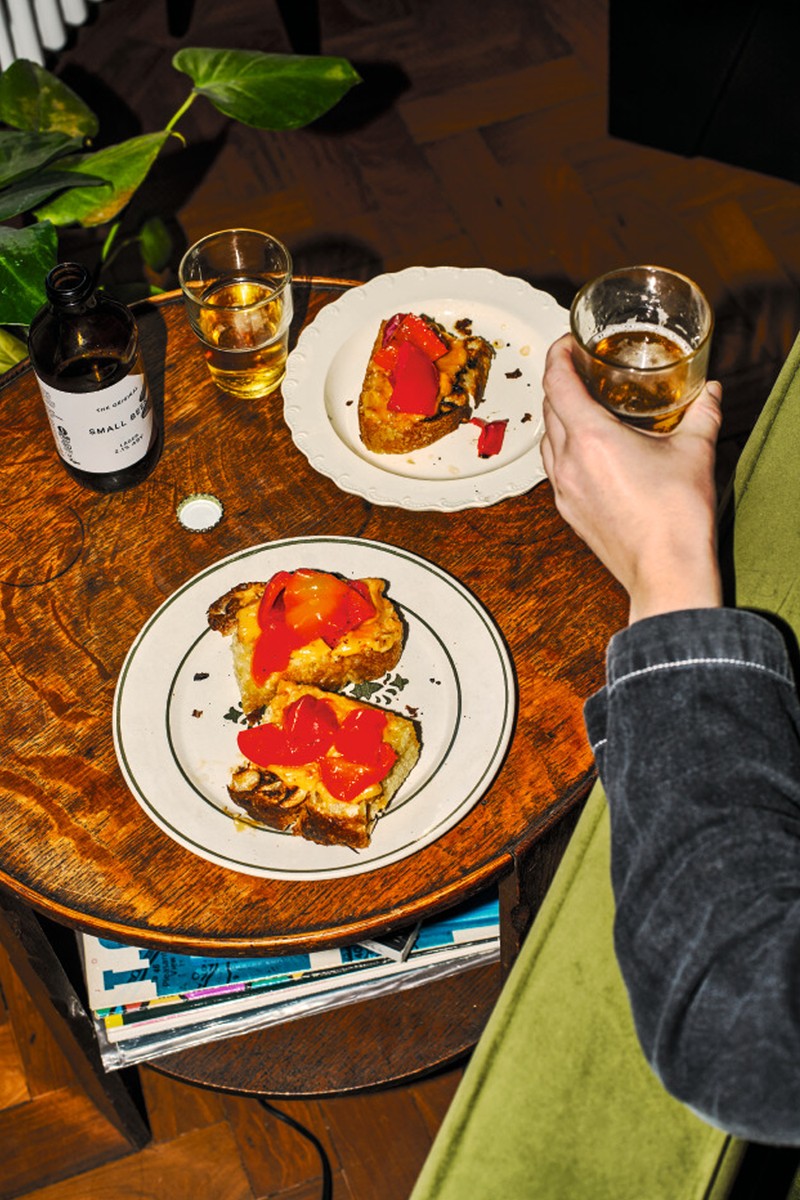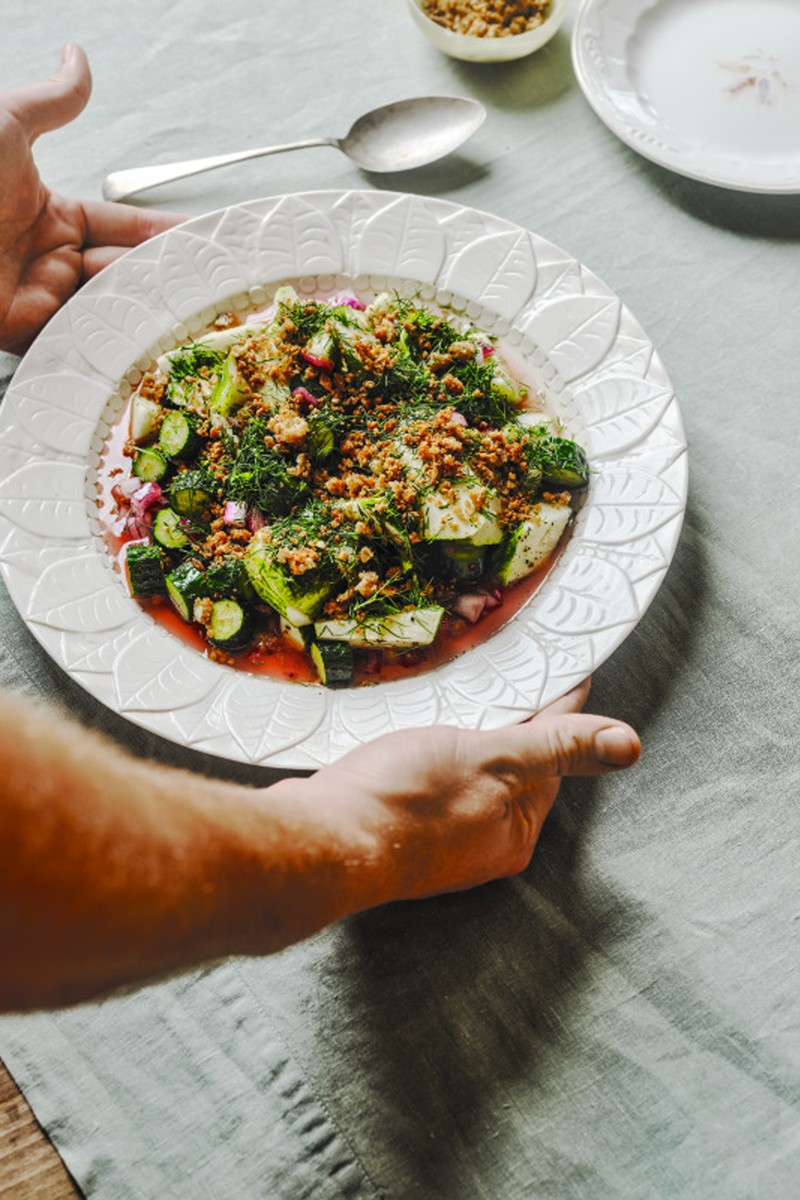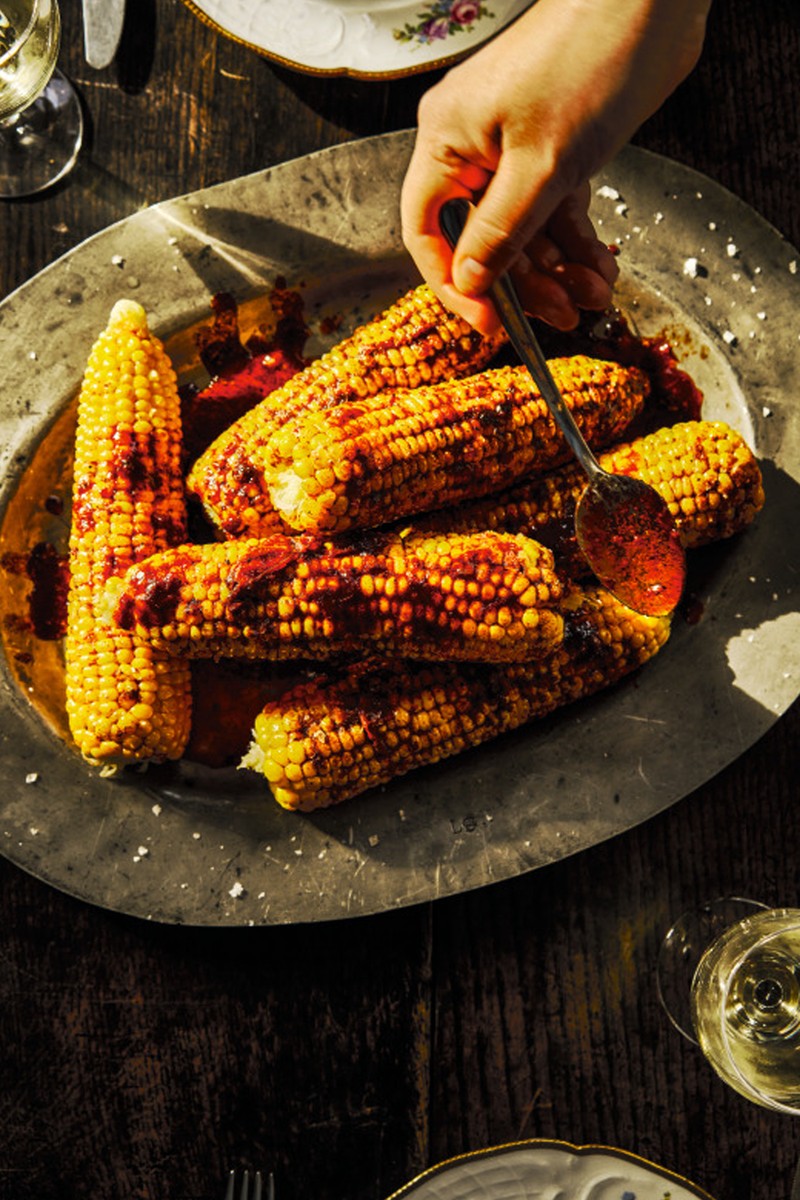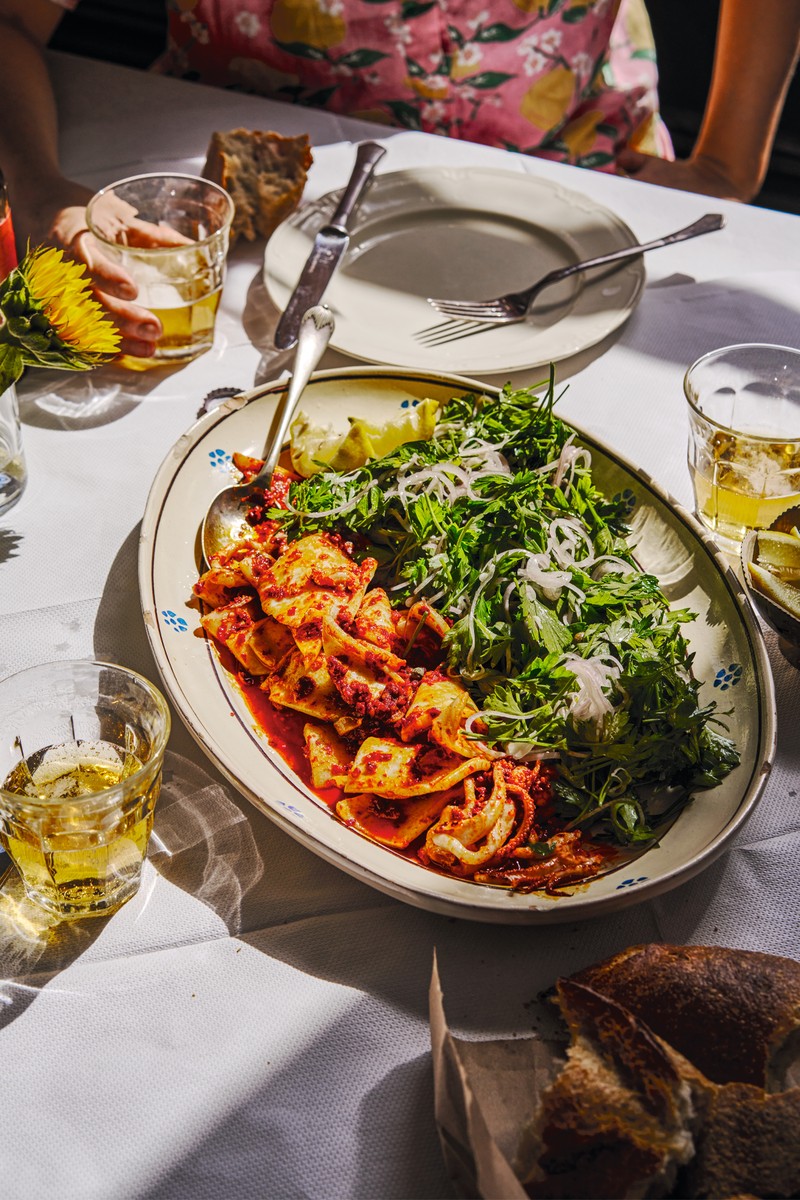4 Recipes From The Camberwell Arms
Great pubs have that intangible quality that makes you want to linger, chat with the person next to you, and lose track of time. It’s where the food and drink are consistently good, but never pretentious, and the people behind the bar know your name – or at least, what you like to drink.
It’s been a journey, both personally and professionally, but hitting the 10-year mark feels like a huge achievement especially when so many pubs and restaurants are having a tough go of it. Looking back, I was pretty fearless to have taken on such a project – just the right mix of ambition and a healthy dose of naivety. That combination helped us push through some tough times and allowed us to build something, which I feel, is totally authentic. I’m incredibly proud of what we’ve accomplished and grateful to those who have supported us over the years.
The scotch bonnet and pork fat on toast has been a staple since day one. It’s a simple dish but it’s packed with flavour, balancing salt, acid, fat and heat. It’s a dish that people keep coming back for and want to tell their friends about. Other mainstays include our famous roast dinners and seasonal pies. Our menu changes constantly but our philosophy remains the same: let the ingredients do the talking.
Balancing being a pub and a restaurant is something we’ve managed to strike quite naturally. We’re serious about food, but we’re also serious about creating a relaxed and welcoming atmosphere, whether you’re popping in for a drink or staying for dinner. We also have an amazing wine list which we’ve developed over the years, so there’s something for everyone.
The most rewarding part of my job is being able to host, cook and care for people – a passion I inherited from my mum and grandmother, who taught me everything I know about food. Over the years, I’ve gained a lot of experience and, naturally, I feel more confident in myself and my vision for The Camberwell Arms than ever before. I’ve recently written a book called Cooking for People, where I share some of the knowledge and insights I’ve gathered along the way.
One of the highlights of running The Camberwell Arms is the sense of community we’ve built. Watching people come together – whether they’re celebrating a special occasion or just catching up with friends – has been incredibly fulfilling. Knowing that we’ve created a space where people feel comfortable and connected is something I’m deeply proud of.
I have always felt like more of a home cook than a chef and I feel like I have had to push my food over the line to get it into a restaurant format. One of the nicest things about writing my book is that I didn’t have to do that. I was able to relax and just make really simple recipes that are very achievable. I know if people follow the recipes, they will be delicious.
And these are four of the pub’s classic dishes to make at home…
Scotch Bonnet Pork Fat & Pickled Peppers On Toast
This has been a staple at The Camberwell Arms since day one. We do the majority of our butchery at the pub, and as such generate pork-fat scraps as a by-product. It might be slightly harder to come across in the real world, but if you ask your butcher nicely, they may well have some fatty scraps they can mince for you. Alternatively, ask for some fatty belly to be minced. A note on scotch bonnets: they are turbocharged capsicums that give you all the tropical, fruity sweetness of a pepper with that slow, intense heat. Capsaicin – the chemical in chillies that feels spicy on the tongue – binds with fat, hence milk being a soothing choice if you’ve overspiced yourself. Because this recipe is predominantly fat, you can overestimate the amount of chilli, as the spice will mellow as it cooks. The pickled peppers are what we’ve always served this dish with at the pub, but any pickle would be delicious. The recipe will make more than you need, but it’s such a good thing to have around. Think of it as a spicy pork butter and use it as such. It’ll keep forever in a jar in the fridge.
Add all the ingredients for the pork fat to a saucepan and place over a medium heat. Season well with salt and pepper. Stir intermittently and cook until the fat has rendered and any small pieces of meat in the mince have turned a nice golden brown. Remove from the heat and allow to cool.
Once cool, store in an airtight container and place in the fridge until you need it. Like I said, it will keep forever (not literally, but at least 3 months).
To make the peppers, mix the vinegar, water and sugar in a pan. Bring to the boil momentarily before removing from the heat. Allow to cool.
Place a frying pan over a very high heat. When it’s as hot as you can handle, add the peppers, season with salt and pepper, and allow them to blacken slightly without cooking all the way through.
Add a little neutral oil to loosen any that have stuck to the base of the pan, then add them to the pickling liquor.
The pickled peppers can be enjoyed immediately and will keep in an airtight container in the fridge for a couple of weeks, but I imagine you will have snaffled them all before then.
Toast the bread and spread it thickly with the cold, spicy pork fat. Allow the hot toast to melt the fat momentarily, then top with some pickled peppers.
Serve immediately, ideally with a strong drink.
To serve: A slice of toast per person – in the pub we use our own focaccia, but this snack will work with any type of bread
A Cucumber Salad
Quite a few of my menus start with structural salads. Crunchy, raw textures have always appealed to me. Sometimes not cooking things makes a showcase of them, and with a bit of love, you’ve got yourself a delicious starter. It’s also worth mentioning that beginning a meal with a bit of acidity, in this case pickled red onions, is a good way to wake up your palette, ready for the main event – a bit like having a glass of champagne or an ice-cold beer with some salty snacks before dinner.
Put the onions in a colander and lightly salt them. The salt level should be as if you were gently seasoning them to be cooked. Set aside while you make the pickle, allowing the salt to draw out some of the acidity from the onions and slightly soften them.
Mix the vinegar, water and sugar in a non-reactive pan and bring to the boil. Simmer for 3 minutes to allow it to come together. Remove from the heat and allow to cool for at least an hour before adding the salted onions.
The pickled onions will keep for as long as you need, just in case you feel like making extra, though this recipe should leave you with some leftovers.
Preheat your oven to 140°C fan/160°C/Gas mark 3.
Toss the bread in the olive oil, making sure each piece is coated lightly but evenly. Mix in the grated garlic, and season with salt and pepper.
Bake for around 30 minutes, depending on your oven. Rye bread is quite dense and moist, hence taking a bit longer to crisp up, but a longer, slower bake will result in crispier crumbs, which ultimately is our goal. Remove from the oven and pulse in a blender to achieve a coarse crumb. The rye crumbs can be made 3 days in advance if that’s more convenient for you, and will keep nicely at room temperature in an airtight container.
Cut the cucumber into large, bitesize pieces. Lots of different shapes is a good thing for catching dressing if you feel like an artist and don’t want to be restrained by the regularities of a specific shape.
In a mixing bowl, season the cucumbers with sea salt and black pepper. Add the dill, leaving a little for when you come to dress the plates, and 2 heaped tablespoons of the pickled red onions. Gently toss the ingredients together, and dress with extra virgin olive oil and a little of the pickle juice. Taste the salad, making sure there is a balance of salt, sweet and acid. If you think it’s delicious, add some rye crumbs and stir through.
Plate the salads individually. Finish with some extra crumbs and chopped dill.
Corn On The Cob With Scotch Bonnet Butter
I don’t understand why some people don’t like sweetcorn. It’s delicious. The majesty of a good corn cob is not to be sniffed at. Super sweet, but also pleasingly rich and savoury, it’s best eaten as fresh as possible. If you can find a pick-your-own farm that grows sweetcorn, I really recommend picking it yourself and eating it that day. The flavour of freshly picked corn is so special. Obviously, any kind of butter is nice with sweetcorn, but in this case I’m suggesting the addition of scotch bonnets. The slow, intense heat they contain, and their almost tropical-fruit pepperiness, is perfect with the natural sweetness of the corn. If you make this on a hotter day, the corn will also BBQ very well from raw, and can be dressed after it’s taken on a good char. A final note: in the UK, the cut-off for fresh sweetcorn is usually around the end of September, so bear that in mind. I wouldn’t recommend buying the cobs out of season, they will have travelled far and, quite aside from the environmental and ethical quandaries that presents, the sweetcorn will be nowhere near as nice.
Put all of the ingredients in a pan and cook over a low heat until the garlic and chilli have completely softened. Allow to cool (if it’s still warm, that’s fine) and blend until the butter is as smooth as your blender will allow. Taste the butter and add a little salt and black pepper if needed. Vegan butter is often quite salty, so bear this in mind when seasoning. Put the flavoured butter in a container with a lid and allow to cool completely before use. Stored in the fridge, it will keep for up to 5 days.
Bring a large pan of water to a rolling boil. I personally don’t season the water when boiling corn because I like it just as it is. Simmer the corn until tender, approximately 5 minutes. Put the cobs in a mixing bowl and dress with plenty of your Scotch bonnet butter. It might be nice to add lime juice and/or zest, but there are so many things you could add. Serve immediately with plenty of napkins, encouraging the use of fingers.
’Nduja Squid With Parsley Salad
I think of squid as a gateway seafood. Similar to prawns, the flavour and texture feels accessible, and so tends to be loved by many, even non-fish eaters. Holiday calamari may well put a child on the road to trying other seafood. Equally, if you’re combining meat and fish, ’nduja could be considered a good jumping-off point. A spicy, soft, cured meat from Calabria in southern Italy, it contains twice as much fat as meat which, once rendered, becomes more like a savoury seasoning in this dish. The parsley salad provides much-needed freshness, balancing out the rich ’nduja. Having some delicious bread on the table for mopping up residual juices is an excellent idea.
If you are using a BBQ, cook the squid quickly over hot coals. If you’re cooking indoors, add a little neutral oil to a large frying pan over a high heat. The pan doesn’t need to be screaming hot, but it definitely wants to sizzle when you add the squid.
Carefully place the squid in the hot pan in a single layer, and season it very lightly with salt and pepper. Cook for 30 seconds on each side, then lift out of the pan and set aside. Continue the process until all the squid is cooked, adding a little more oil in between batches if needed.
Turn the heat down and add the ’nduja to the pan. Use a wooden spoon to break it up a bit, then allow the fat to render. This will only take a couple of minutes – the fat will melt and create a sort of spicy, oily sauce.
Add the squid back into the pan with the ’nduja and toss very gently. Finish with a squeeze of lemon before turning off the heat. Plate up the spicy squid immediately with the parsley salad alongside it.
The Camberwell Arms, 65 Camberwell Church Street, Camberwell, SE5 8TR
Visit TheCamberwellArms.co.uk & follow @TheCamberwellArms
DISCLAIMER: We endeavour to always credit the correct original source of every image we use. If you think a credit may be incorrect, please contact us at [email protected].
